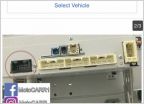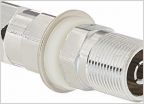-
Welcome to Tacoma World!
You are currently viewing as a guest! To get full-access, you need to register for a FREE account.
As a registered member, you’ll be able to:- Participate in all Tacoma discussion topics
- Communicate privately with other Tacoma owners from around the world
- Post your own photos in our Members Gallery
- Access all special features of the site
Placing Components and/or Coaxials in Parallel => Any degraded Sound Quality?
Discussion in 'Audio & Video' started by mbrogz3000, Aug 5, 2015.


 Plug and play adapter
Plug and play adapter Cb antenna install question
Cb antenna install question General Questions on Installation of Amp with Aftermarket Head Unit
General Questions on Installation of Amp with Aftermarket Head Unit Active Sub wiring question 2019 taco
Active Sub wiring question 2019 taco












































































